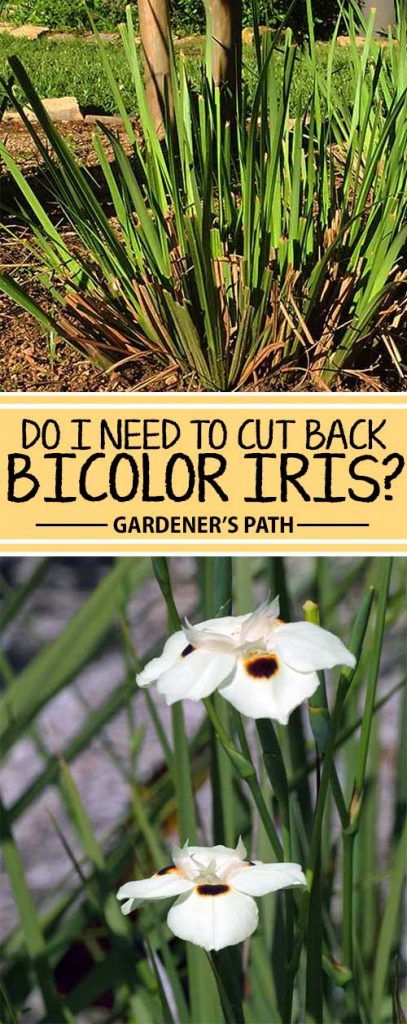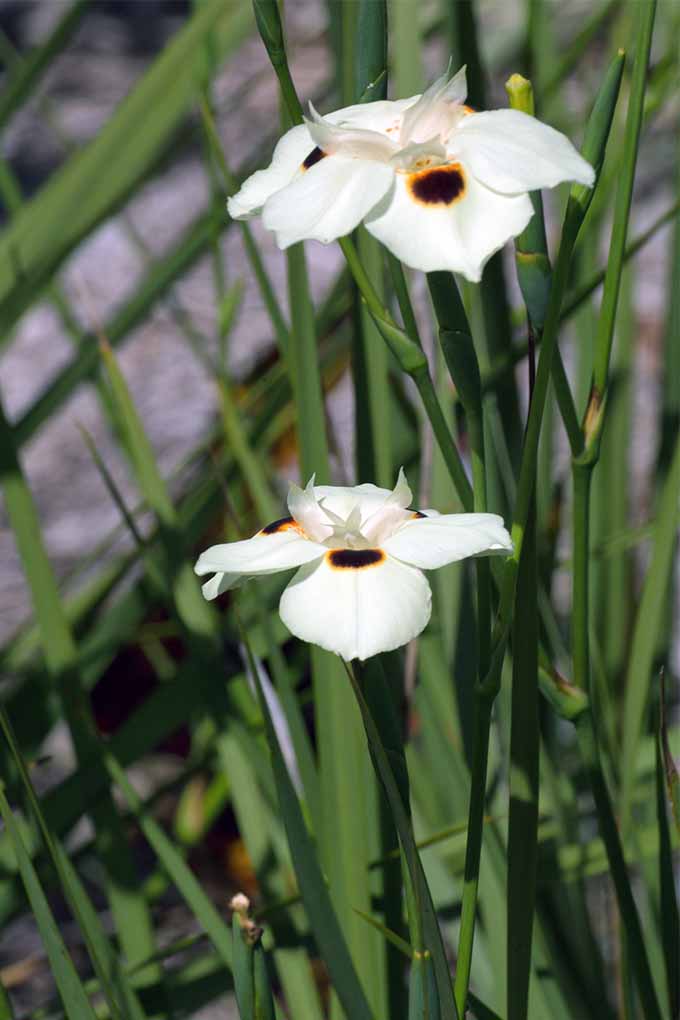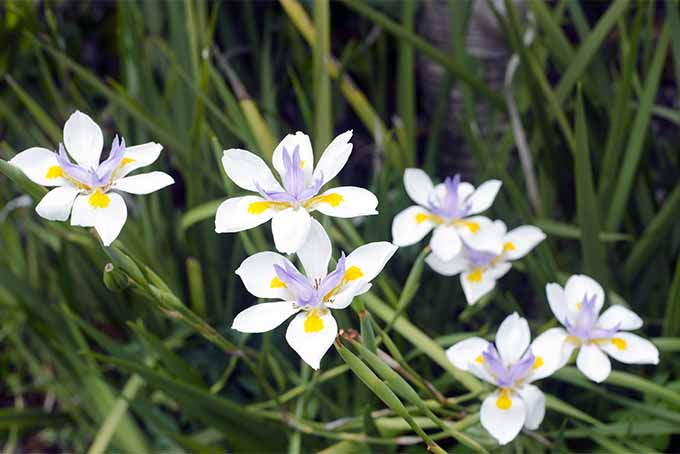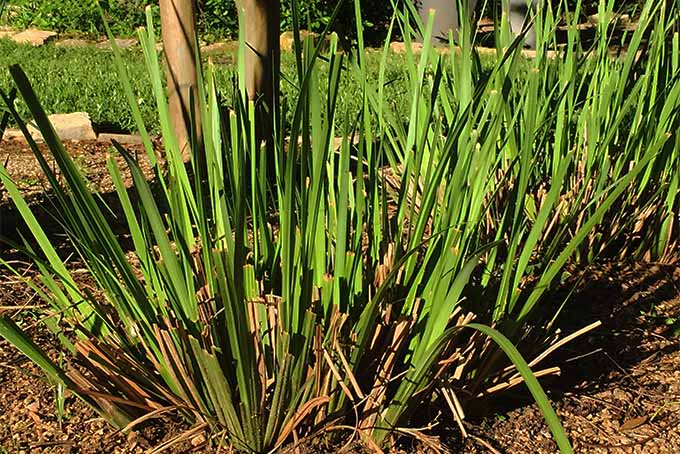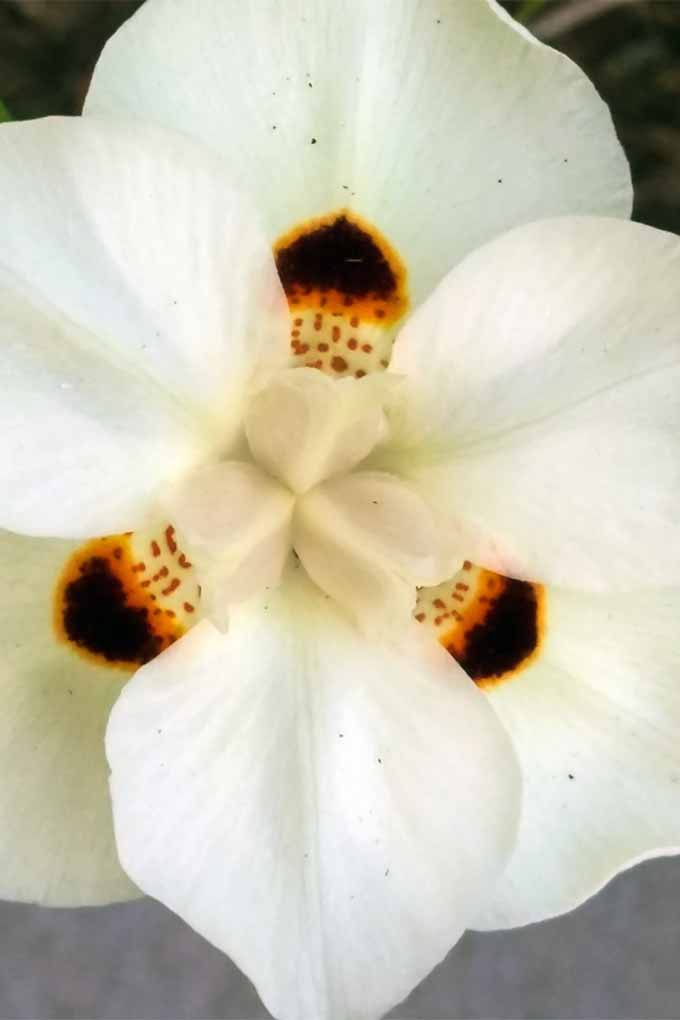You might wonder if it’s also necessary to cut back grassy irises such as bicolor (Dietes bicolor) or African (D. vegeta) — plants that also sport the long, slender leaves common to grasses. We’ll look at the taxonomy of these plants, and then get down to brass tacks about whether you should be cutting them back.
What’s in a Name?
Just so we’re on the same page about what plants we’re talking about, let’s get some confusing nomenclature business sorted out. The genus for this group of rhizomatous plants is Dietes, which is a part of the family Irideceae.
These plants were once classified in the genus Moraea but were kicked out because they have rhizomes, as opposed to Moraea, which have corms. Corms are a different type of underground plant stem, one that’s more bulbous. All this is to say there are almost as many names for these long-leafed beauties as there are stars in the sky, so don’t be dismayed if you call them tomato and your neighbor calls them toe-mah-toe. Herein, we’re referring to species in the genus Dietes, and you can apply the instructions below to plants commonly known as African iris, bicolor iris, fortnight lily, butterfly iris, Japanese iris, wood iris, and probably untold other nicknames.
Start with Routine Maintenance
On an as-needed basis, cut brown or yellow leaves back to the base of the greenery with pruning shears. Cut sharply and cleanly straight across the leaf blade, near the crown of the plant.
If you want to prevent the plant from self-seeding, cut just under the green seedpod with scissors to remove it. You can pinch or clip spent blooms, but don’t remove a healthy-looking flower stalk. It will continue to produce many more blooms. At some point, however, the flower stalk’s decline will become evident, and you can prune it back to the crown.
The Big Chop: Yes or No?
The short answer is yes, it’s perfectly okay to completely cut back your Dietes. A wholesale cut, as you would do with ornamental grasses, is definitely in order if you’ve neglected your Dietes for several years and there are more brown and yellow leaves than green. After cutting the entire plant back to ground level with hedge clippers, the plant will joyfully return to life, come springtime. You’d preferably do this cutting in fall, but don’t sweat it if you’re unmotivated to get out there until the weather has warmed up. Gardeners have waited well into spring, even when new growth was percolating, before bringing out the big guns and giving the plant a shave. And the plant has survived quite nicely. It’s a good idea to thoroughly water these normally drought-tolerant plants after a haircut, and offer a balanced fertilizer with equal amounts of nitrogen, phosphorous and potassium to help promote new growth.
Sharpen Your Tools
So, in the midst of carefully pruning your crape myrtle trees and tending your winter lettuces, don’t forget to have a look at your grassy irises and assess whether they could use a little touch-up clipping, or perhaps even a wholesale cut back.
An abundance of fresh, green, spiky foliage will be your reward for a chop well done. How do you care for your bicolor or African irises? Do you have another name for them? Tell us in the comments section below! Pruning photo by Gretchen Heber, © Ask the Experts, LLC. ALL RIGHTS RESERVED. See our TOS for more details. Uncredited photos: Shutterstock.
